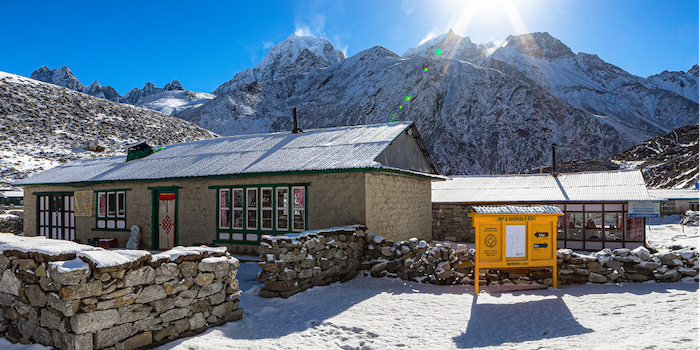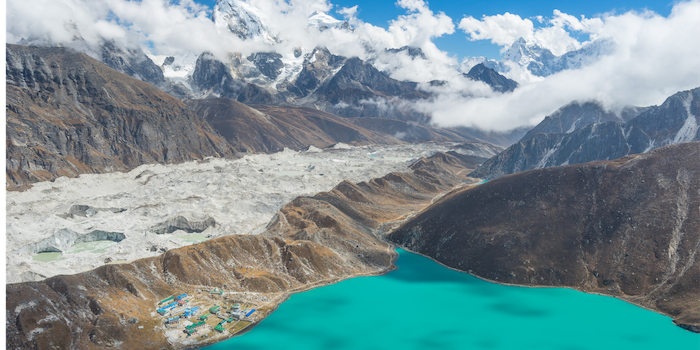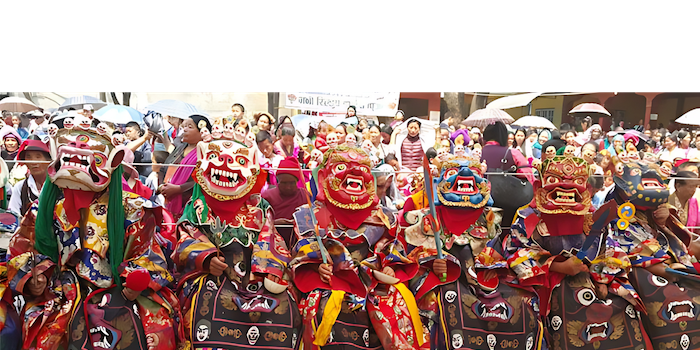

EBC is situated at an exceedingly high altitude (17,600 feet/5380 meters), and the overland route to reach it is similarly elevated. Consequently, warmth is seldom experienced in the Everest region, although there are pronounced disparities in temperature, precipitation, and snowfall across the seasons.
The prime months for trekking in the Everest region are March, April, May, October, and November, characterized by optimal conditions. Spring and autumn typically present moderate temperatures, clear skies, minimal rain, and reduced risk of troublesome snowfall. Although these periods witness high trail traffic, the allure of superior weather conditions often outweighs this consideration.
Winter (December, January, and February) isn't inherently unfavorable for trekking to EBC, but it is considered the off-season. While temperatures plummet, necessitating thorough preparation for freezing conditions, the upside is remarkably clear skies and unparalleled mountain vistas. Moreover, the absence of crowds ensures a more solitary trekking experience.
The monsoon season (June to early September) is not advisable for traveling to EBC due to the wet weather, which can trigger trail landslides and muddy conditions, while also obscuring mountain views with rainclouds. However, warmer temperatures prevail during this time, and despite intermittent rainfall, trekking can still be manageable if well-prepared. Additionally, helicopter tours to EBC are best enjoyed during clear and predictable weather, excluding the monsoon period. Weather conditions not only impact experiences in the Everest region but also affect flights from Kathmandu to Lukla, with frequent cancellations due to poor visibility and weather conditions. While flights are more reliable outside the monsoon season, rain, fog, or smog can disrupt schedules year-round.

Spring and autumn mark Nepal's peak seasons, drawing crowds to the popular EBC trek. During these times, trails are bustling, and securing preferred accommodations can be challenging. Trekking with a guide becomes essential, especially for bed reservations. Moreover, the Everest climbing season from May to early June adds to the area's activity. Lukla flights book up quickly in peak seasons, necessitating early reservations.
Conversely, winter and monsoon seasons offer respite from the crowds, albeit with limited teahouse options due to closures. Alternative treks in the Everest region provide quieter experiences, such as the Jiri to Lukla or Phaplu routes, ideal for peak seasons or winter. The Gokyo Lakes Trek offers stunning vistas with fewer high-altitude nights, best enjoyed in favorable weather.
For seasoned trekkers seeking a challenge, the Three Passes Trek provides an adventurous circuit route with three high passes. In contrast, the Arun Valley and EBC Trek offers a unique approach, traversing the Arun Valley with sparse crowds until merging onto the EBC trail.
Winter indulgence in luxury lodges amidst the Everest region's beauty is another enticing option, offering comfort and warmth after a day's trek. Additionally, climbers can opt for Island Peak, ideal during peak seasons for a longer climbing window, with views of EBC from Kala Patthar.

A captivating aspect of traveling in Nepal is experiencing the vibrant Hindu and Buddhist festivals celebrated throughout the year. In the Everest region, inhabited mainly by Tibetan Buddhist Sherpas, there's a distinct cultural flavor compared to the predominantly Hindu areas like Kathmandu. Among the significant festivals for Sherpas is Mani Rimdu, typically held in October or November. It's particularly special to witness this festival in Tengboche, where the Tengboche Monastery hosts elaborate rituals and colorful ceremonial dances performed by monks adorned in ornate attire.

© 2024 -Nepal New Generation Trek & Adventure. All Rights Reserved.
Coded with by KTM Rush.